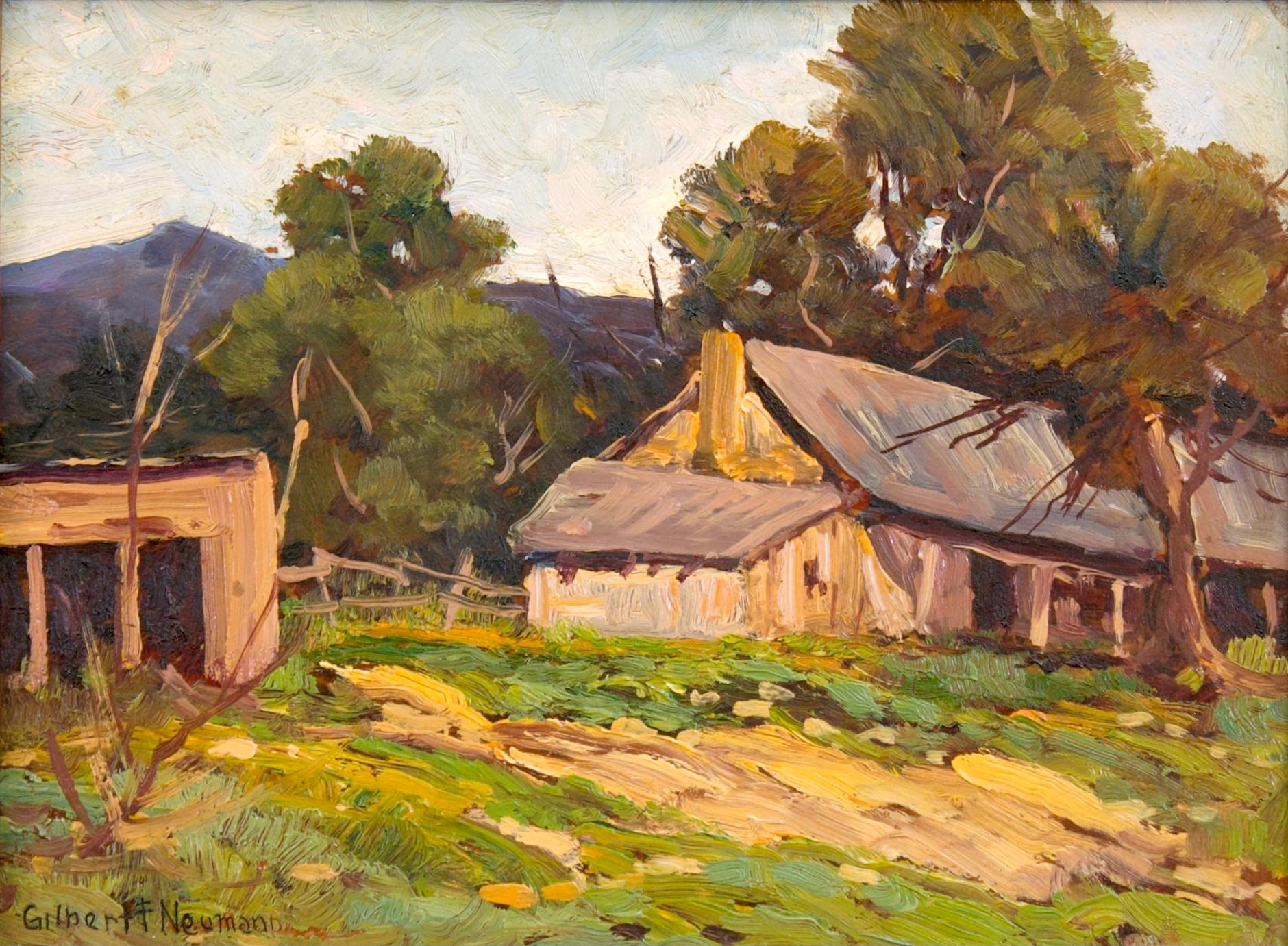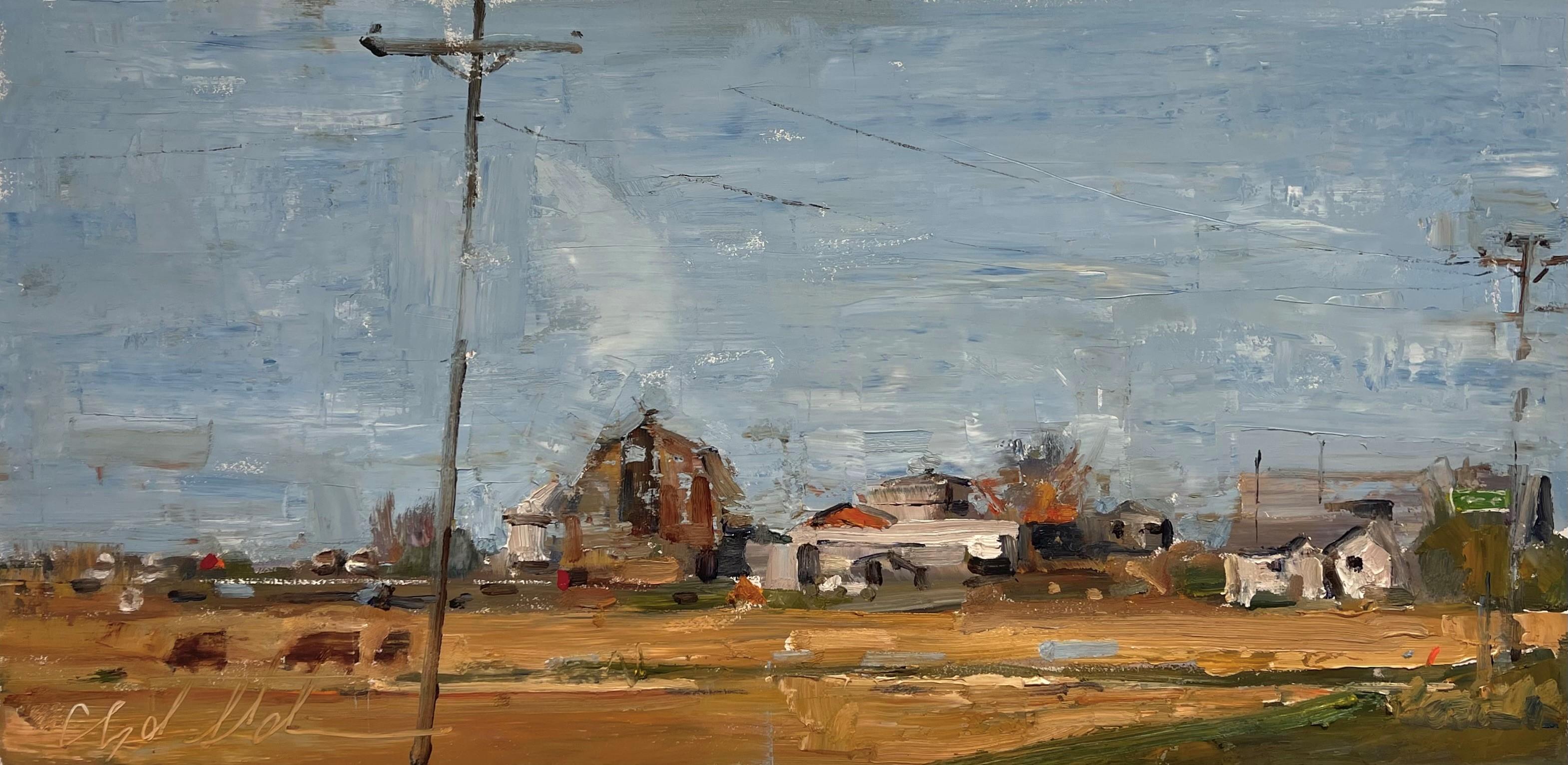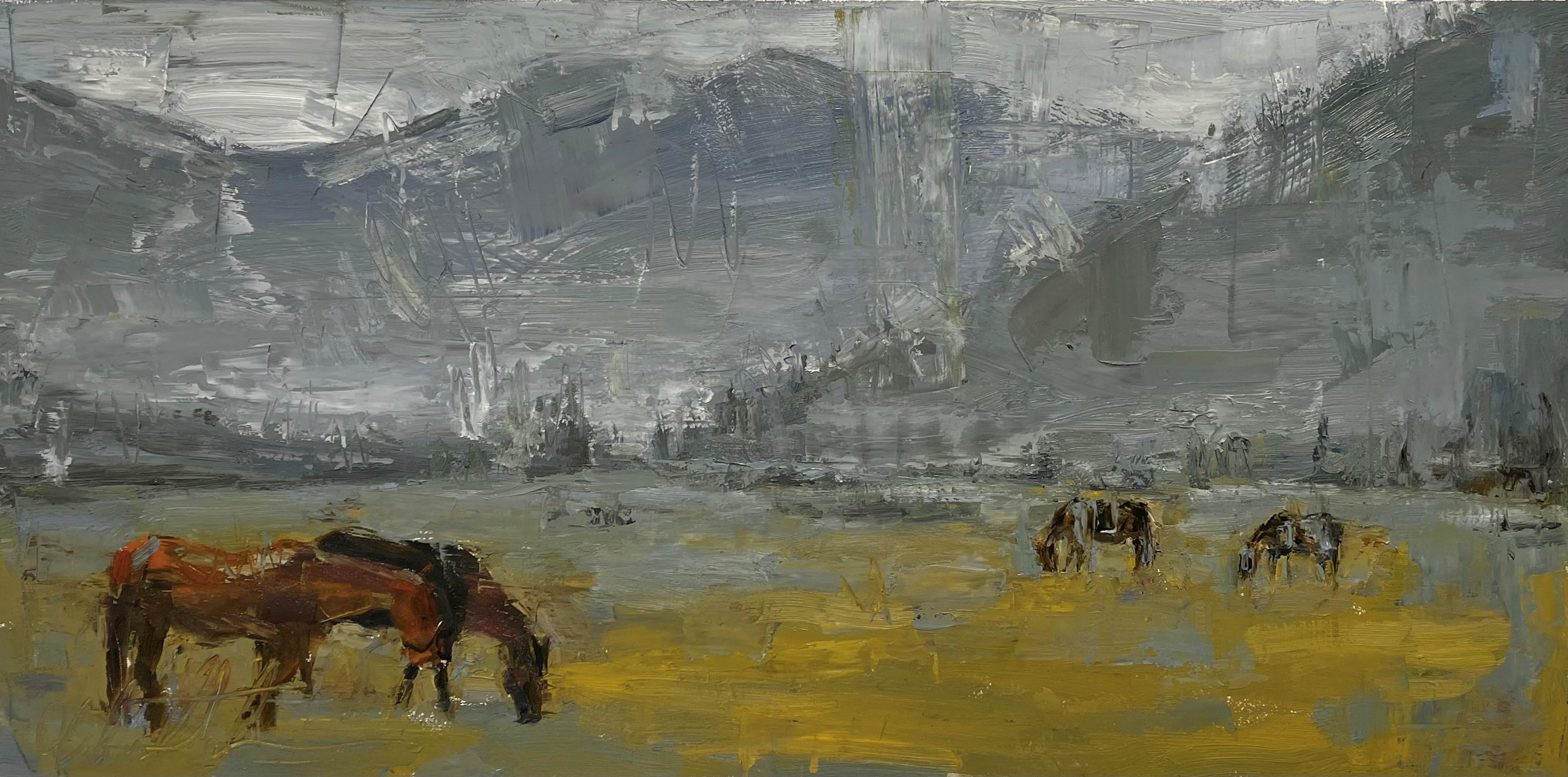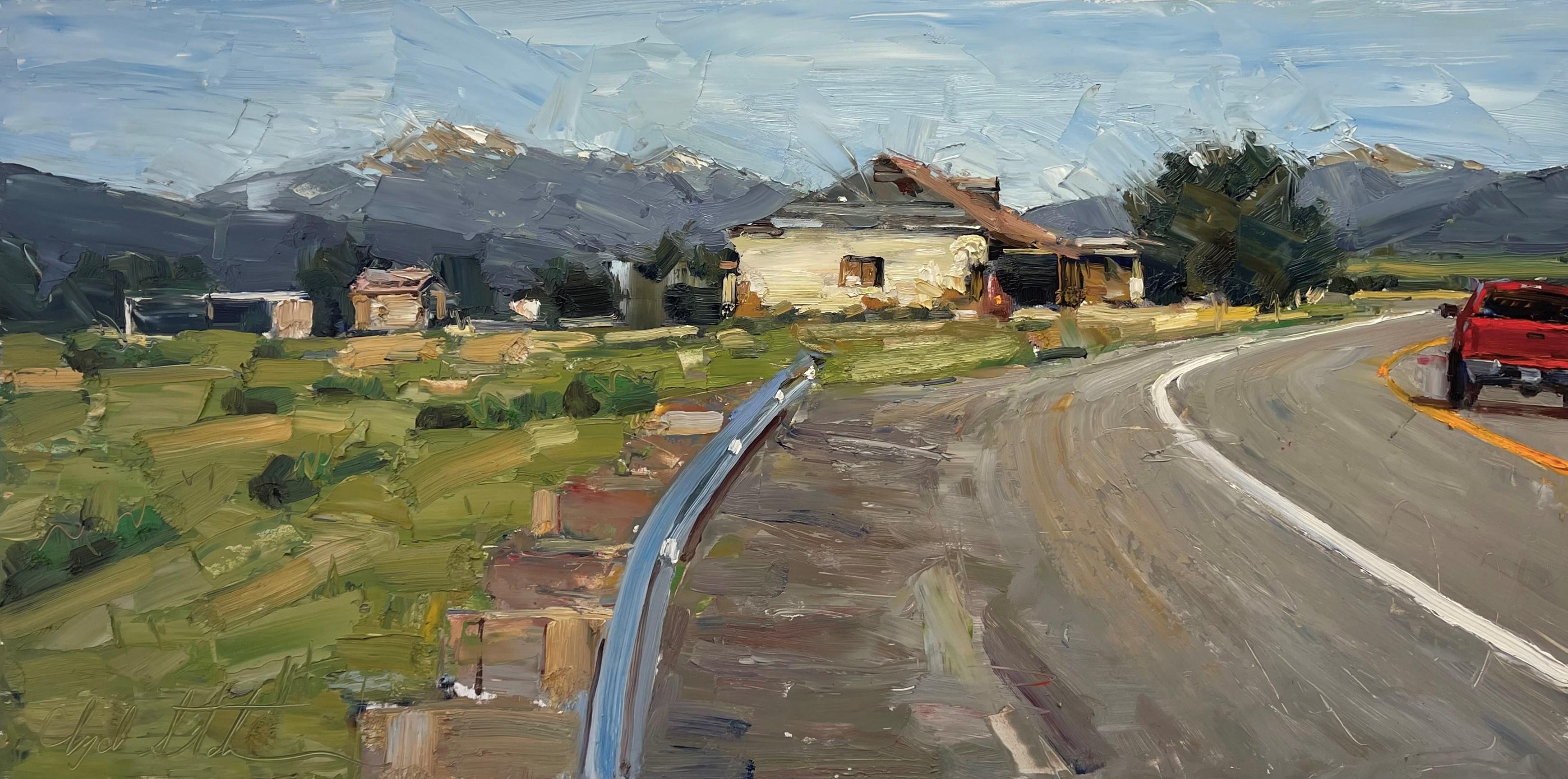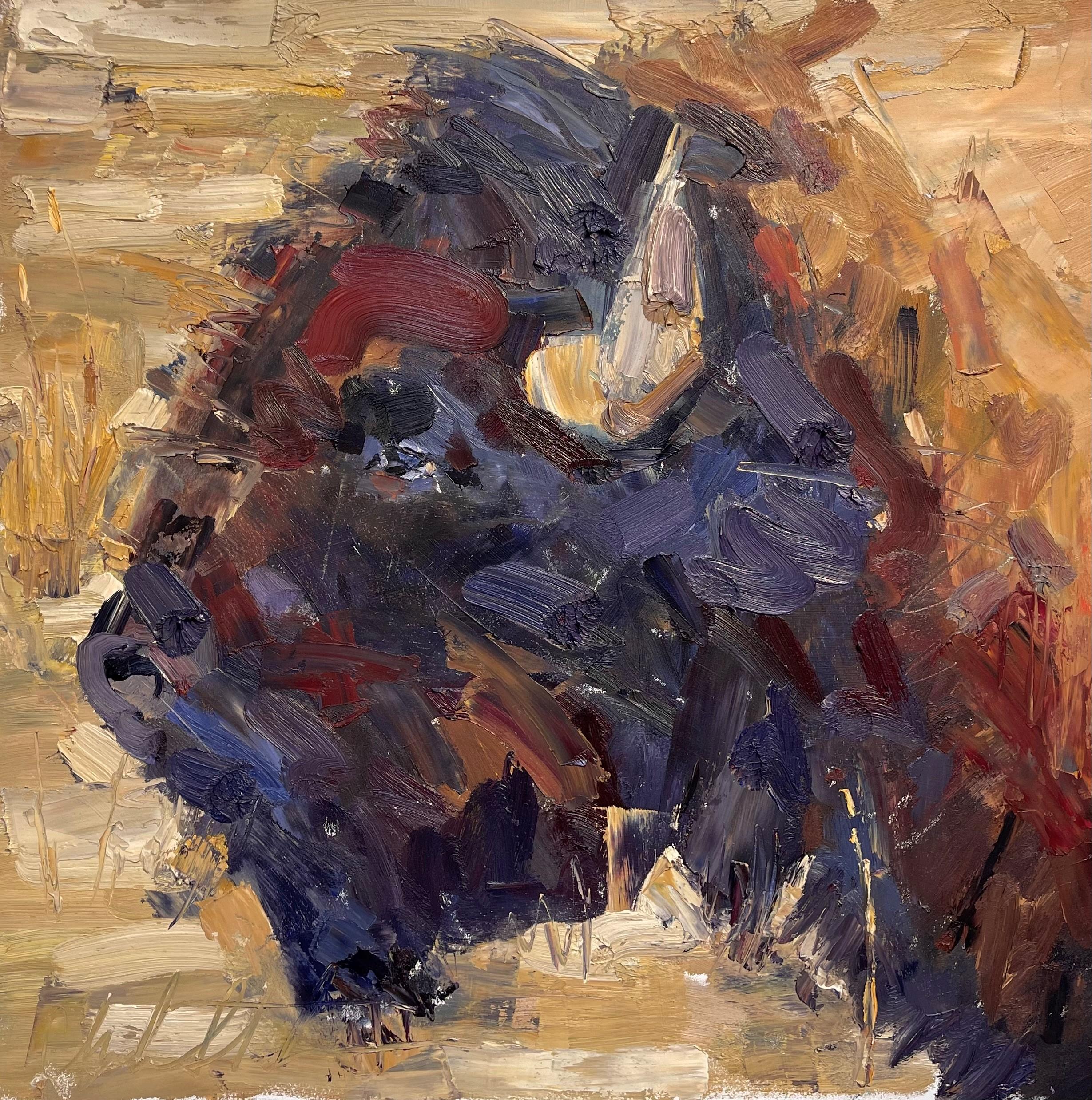Items Similar to "The Hunt, " Francis Luis Mora, Sporting Art, Autumn Landscape, Impressionism
Want more images or videos?
Request additional images or videos from the seller
1 of 9
Francis Luis Mora"The Hunt, " Francis Luis Mora, Sporting Art, Autumn Landscape, Impressionism
About the Item
Francis Luis Mora (1874 - 1940)
The Hunt
Oil on panel
12 x 16 inches
Signed lower left
F. (Francis) Luis Mora was born in Montevideo, Uruguay on July 27, 1874. His father, Domingo Mora (1840- 1911), was a Spanish architectural sculptor. His mother, Laura Gaillard, had two sisters who married into the extended Bacardi rum family of Santiago de Cuba, and Luis Mora was their nephew. His brother was Joseph Jacinto Jo Mora (1876-1947), who would become a noted California artist.
In 1880, Domingo Mora accepted a position as Director of Design for the Perth Amboy Terra Cotta Company in New Jersey. Luis Mora was raised in Perth Amboy, receiving his first art instruction from his father. The family moved to Allston, Massachusetts where Luis Mora graduated from high school.
F. Luis Mora entered the Boston Museum School of Fine Art in 1889, when he was fifteen years old. His teachers were Frank Benson and Edmund Tarbell. In 1893, Mora returned to New York to work as an illustrator and to study composition with H. Siddons Mowbray at the Art Students League.
In 1900, Mora married Sophia Brown Compton, daughter of the Mayor of Perth Amboy, NJ. The couple lived in New York City, and the artist also kept a studio in Perth Amboy. Luis Mora quickly became a successful figural painter, portraitist, muralist and illustrator.
Mora's life-long artistic goal was to adapt the techniques of the Spanish Old Masters into American modern painting. Mora frequently traveled to Spain to visit his extended family, and to paint. He also copied masterpieces by Diego Velázquez in the El Museo del Prado in Madrid. His patrons for Spanish scenes were Alfred Stieglitz and William Macbeth. He had a solo show of Spanish paintings in 1910 at the New York Watercolor Club.
In 1904, Mora was elected an Associate at the National Academy of Design, and became a full member in 1906. He was the first Hispanic to be elected to the NAD, and he became an exhibition jury member in 1907. Mora was also a member of The National Arts Club, The Art Students League, The Salmagundi Club, The Pen and Brush Club, The Architectural League, The American Watercolor Society, and many other art societies.
Mora won three medals at National Academy competitions, and he also won medals at the St. Louis World's Fair Exhibition in 1904, and at the Panama-American Exhibition in San Francisco in 1915.
He was a popular teacher of figural drawing and painting, known as "Life Classes." He taught at William Merritt Chase's Chase School of Art, the renamed New York School of Art, at the Art Students' League, the Art School at the Ethical Culture Society, and the Grand Central School of Art.
Mora's first mural was commissioned by the trustees of the Lynn, MA Public Library in 1900. He also painted the dome of the Missouri State House, St. Louis in 1904, panels for Columbia College in 1909, murals and portraits for the Governor's Mansion of New Jersey in 1911 and a monumental mural for The Red Cross in 1919 in collaboration with Major Joseph Kitchell. In 1937 he created the mural "Our Christian Era" for Dunn & Bradstreet for the 1939 Worlds Fair, as a commentary about wars waged among nations.
Mora was a prolific illustrator, often winning cover competitions. His illustrations appeared in Harper's Magazines, Collier's, The Century, The New York Tribune (now the NY Times), Red Cross Magazine, and many other publications.
Mora painted posthumous portraits of President Warren Harding and Andrew Carnegie, and dozens of eminent Americans and their children.
In 1912 Mora bought 28 acres in the Litchfield Hills, Gaylordsville, CT, where he and his wife Sonia completed their summer home and studio in 1922. Their only child, Rosemary Mora, was born in 1918 in New York City. Sophia Mora died suddenly in 1931 in Danbury Hospital, CT.
Mora 's second wife was May Safford, the widow of Ray Safford, an officer and director of Scribners Publishing Company.
Luis Mora died at age 64 in June 1940 at May's apartment.
Today F. Luis Mora's paintings are held by thirty-four major art museums, including The Metropolitan Museum of Art, The Smithsonian Museum, The Newark Museum, The Hood Museum (Dartmouth University), The San Diego Art Museum, The Butler Museum of American Art, and The National Gallery of Canada.
- Creator:Francis Luis Mora (1874 - 1940, American)
- Dimensions:Height: 21.5 in (54.61 cm)Width: 25.5 in (64.77 cm)
- Medium:
- Movement & Style:
- Period:
- Condition:
- Gallery Location:New York, NY
- Reference Number:1stDibs: LU1841210631382
About the Seller
5.0
Platinum Seller
These expertly vetted sellers are 1stDibs' most experienced sellers and are rated highest by our customers.
Established in 2021
1stDibs seller since 2022
60 sales on 1stDibs
Typical response time: 1 hour
- ShippingRetrieving quote...Ships From: Larchmont, NY
- Return PolicyA return for this item may be initiated within 3 days of delivery.
More From This SellerView All
- "Summer Landscape, " Joseph DeCamp, Boston Ten American ImpressionistsBy Joseph Rodefer DeCampLocated in New York, NYJoseph Rodefer DeCamp (1858 - 1923) Summer Landscape Oil on board 11 x 15 inches Signed lower right Born in Cincinnati, Ohio on November 5, 1858, Joseph DeCamp began his artistic career in his teens and remained active throughout his life. Although he initially painted landscapes, Decamp became a renowned and respected portraitist. He was famous for his images of men of high society and women within domestic interiors. Decamp began his artistic training in 1873 when he enrolled in the McMicken School of Art and Design in Cincinnati. The head of the school, Thomas Satterwhite Noble, was a European-trained painter whose "insistence on rigorous draftsmanship, true to the academic manner in which he had been trained, exerted a lasting influence on DeCamp." DeCamp studied under Noble for five years, but was also a student of Frank Duveneck at the Ohio Mechanics Institute. He adopted Duveneck's bold, realistic style and many of his paintings executed throughout the 1870s and 1880s reflect this influence. Like most American artists of his generation, DeCamp went abroad to study. In 1878, following in the footsteps of Duveneck and other Midwesterners, he traveled to Munich to attend the Royal Bavarian Academy. Soon after his arrival, however, he gravitated away from the academy and towards Duveneck and eventually followed his mentor to Florence and Venice. During these years, DeCamp focused on landscape and portraiture as his primary subjects. These themes would continue to occupy the artist when he returned to America in 1883. When DeCamp arrived back in the United States in 1883, he first settled in Cincinnati, but soon moved to Cleveland to teach at what is now Case Western Reserve University. He then relocated once more to the Boston area, where he would remain for most of his life. DeCamp began teaching at Wellesley Female Academy and, in the fall of 1885, began as an instructor at the School of Drawing and Painting at the Museum of Fine Arts in Boston. He quickly established himself as one of the leading figures in the Boston art community and became a founding member of The Ten American Painters, formulated in 1897. This group included Childe Hassam, John Henry Twachtman, Julian Alden Weir, Frank Benson, Thomas Dewing, Willard Metcalf, Robert Reid, Edward Simmons...Category
19th Century American Impressionist Landscape Paintings
MaterialsPanel, Oil
- "Concarneau, Brittany, France" Hayley Lever, American ImpressionismBy Hayley LeverLocated in New York, NYHayley Lever (1876 - 1958) Concarneau, Brittany, France, 1905 Oil on panel 6 3/4 x 9 1/2 inches Signed by the artist lower left Inscribed by another hand on the reverse Provenance: Clayton-Liberatore Galleries, Bridgehampton, New York Hayley Lever’s (1875-1958) versatility has worked against his posthumous reputation. He was never associated with a single artistic movement, instead producing impressionist, post-impressionist, and expressionist works. While best known as a painter of post-impressionist marine scenes, his subject matter included landscapes, urban scenes, and still lifes across his 60-year career. This lack of a singular style or subject has given him an amorphous place in U.S. art history despite his obvious accomplishments. [Richard] Hayley Lever was born in Bowden, South Australia in 1875. He excelled in painting classes at Prince Alfred College (1883-91) and Norwood Art School (1891-93) in Adelaide. In the 1890s, Lever moved to England, studying art in London and painting at St. Ives, a fishing port and popular artistic colony on the Cornish coast. In St. Ives, Lever shared a studio with Frederick Waugh, and studied painting with Albert Julius Olsson and Algernon Talmage. Lever was a plein air painter particularly interested in the effect of sunlight on the sea. He painted in a distinctive style, strongly influenced by the works of Vincent van Gogh, that might now be called post-impressionism. He used a limited palette to paint the St. Ives harbor, particularly at dusk or in the moonlight. His strong contrasting colors and thick use of paint created a crisp and physical surface that earned him acclaim in Europe. Lever’s many St. Ives seascapes are among his most popular works. In 2017, his painting entitled “The Old Lighthouse and Fleets of St. Ives” sold at auction for $162,500. In 1912, Lever moved to New York to test the art market in the United States. In Manhattan, Lever met prominent U.S. painters such as Ernest Lawson, Robert Henri, William Glackens, John Sloan, and George Bellows. Lever exhibited with this group regularly in New York City, painting parks, streets, bridges and the Manhattan waterfront. However, he soon discovered the scenic potential of Gloucester, Rockport, and Marblehead in the Cape Ann area of Massachusetts...Category
Early 1900s American Impressionist Landscape Paintings
MaterialsOil, Panel
- "On the Beach, " Nicolai Cikovsky, American Impressionism, Landscape SeascapeBy Nicolai CikovskyLocated in New York, NYNicolai S. Cikovsky (1894 - 1984) On the Beach Oil on panel 15 1/4 x 20 inches Signed lower right Provenance: ACA Galleries, New YorkCategory
Mid-20th Century American Impressionist Landscape Paintings
MaterialsOil, Panel
- "MacMahan's Maine, " Howard Everett Giles, Figurative Landscape, ImpressionismLocated in New York, NYHoward Everett Giles (1876 - 1955) MacMahan's Maine Oil on canvas backed with board 30 x 30 inches Signed lower right Provenance: Art Institute of Chicago Christie's New York, December 8, 2011, Lot 2 Howard Giles spent most of his career in New York City, where he was an educator, magazine illustrator, and painter who espoused the theory of Dynamic Symmetry. He was born in Brooklyn, and as a young man worked in a New York railroad office. Financial support of a family friend allowed him to study at the Art Students League with H. Siddons Mowbray. In early 1910, he became an illustrator for Scribner's Magazine, and in 1912, on sketching assignment for Scribner's went to England. During World War I, he did illustration for Harper's Monthly Magazine, and many of his images were 'roaring twenties' genre and figure paintings. In 1912, he began teaching life classes at the New York School of Fine and Applied Arts (later Parsons School of Design), and remained there until the late 1920s. During that time, he was also a part-time instructor at the Childs-Walker School in Boston, and accepted numerous invitations to lecture including at Carnegie Institute in Pittsburgh, Pennsylvania Academy of the Fine Arts, Detroit Institute of Arts and Wellesley College. His initial painting style was Impressionism, but he grew increasingly interested in other scientific, aesthetic theories. He worked with Jay Hambridge from 1916 to 1919, applying Hambridge's theory of Dynamic Symmetry to his painting and his lecture topics. From 1922 to 1926, Giles also worked with and was influenced in his own painting by colorist theorist Denman Ross, who espoused a limited and related color palette. For many of his paintings, Giles used watercolor although he also painted in oil and pastels. During the last years before his retirement when he moved to Woodstock...Category
Early 20th Century American Impressionist Landscape Paintings
MaterialsOil, Panel
- "Autumn Landscape, " Theodore Wendel, American Impressionist, Giverny, FranceBy Theodore WendelLocated in New York, NYTheodore M. Wendel (1859 - 1932) Autumn Landscape Oil on canvas laid down on panel 10 1/2 x 16 inches Signed lower right Theodore Wendel is one of the most respected American impressionists and major museums and collectors are eager to purchase exquisitely rendered works like "View from the Artist's Farmhouse, Ipswich, MA" that display Wendel's finest period of impressionism. He is considered the "most French" of American painters along with Theodore Robinson and Childe Hassam. Who Was Who in American Art states, "He was one of the most successful Impressionist landscape painters of Boston - and America…He was one of the few Americans whose works Monet chose to praise….[he was] one of the most important American Impressionists." American Art Analog states, "Theodore Wendel was one of the first American artists to embrace the form and technique of French impressionism….In the summer of 1886 he went to Giverny, the home of Monet, and joined an American colony of young artists, among them Louis Ritter...Category
Early 20th Century American Impressionist Landscape Paintings
MaterialsCanvas, Oil, Panel
- "Parisian Nocturne, France, " Frank Edwin Scott, American ImpressionismBy Frank Edwin ScottLocated in New York, NYEdwin Frank Scott (1863 - 1929) Parisian Noctune, France Oil on woof panel 8 1/4 x 10 1/2 inches Signed lower left Born in Buffalo, New York, Edwin Frank ...Category
Late 19th Century American Impressionist Landscape Paintings
MaterialsOil, Wood Panel
You May Also Like
- Old House, Built in 1848By Gilbert NeumannLocated in Austin, TX"Old House, Built in 1848" by painter Gilbert F. Neumann Medium: Oil paint on panel Size: 9 x 12 inches Frame Size: 14 x 18.5 inches A nostalgic painting of ...Category
20th Century American Impressionist Landscape Paintings
MaterialsOil, Panel
- "Country Road" Oil PaintingLocated in Denver, COClyde Steadman's "Country Road" is an original, handmade oil painting that depicts an impasto painting of a pastoral setting.Category
2010s American Impressionist Figurative Paintings
MaterialsOil, Panel
- "Sheepish" Oil PaintingLocated in Denver, COClyde Steadman's "Sheepish" is an original, handmade oil painting that depicts an impasto painting of a sheep gathered on a green hillside.Category
2010s American Impressionist Animal Paintings
MaterialsOil, Panel
- "Cold on the Plain" Oil PaintingLocated in Denver, COClyde Steadman's "Cold on the Plain" is an original, handmade oil painting that depicts an impasto painting of horses grazing in a pastoral setting with m...Category
2010s American Impressionist Animal Paintings
MaterialsOil, Panel
- "Going Round the Bend" Oil PaintingLocated in Denver, COClyde Steadman's "Going Round the Bend" is an original, handmade oil painting that depicts an impasto painting of a two lane road going around the bend with mountains in the backgrou...Category
2010s American Impressionist Figurative Paintings
MaterialsOil, Panel
- "As you Wish" Oil PaintingLocated in Denver, COClyde Steadman's "As you Wish" is an original, handmade oil painting that depicts an impasto painting of a bison in profile.Category
2010s American Impressionist Animal Paintings
MaterialsOil, Panel
Recently Viewed
View AllMore Ways To Browse
Old World Landscape Art
Company School Art
Modern Art Masterpiece
Landscape Impressionism
Impressionism Landscape Paintings
Oil Paintings Impressionism Landscapes
Landscape Mural
American Impressionism
Missouri Art
Central California Art
Autumn Landscape
Autumn Landscape Art
Antique Hunt
New York Impressionism
Modern Impressionism
Francis First
Francis The First
1939 World Fair
